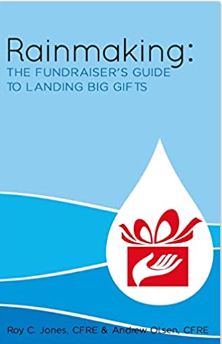If you cannot change the people you are around… change the people you are around. Sure, it sounds easy, but it is the toughest part of integrating new technology. Some people just will not be able to change or grow.
Roy C Jones
Do you have an annual plan for measuring CHANNEL INTEGRATION?
Direct marketing today messages focus on the donors’ data, giving history and areas of interest to tailor communications to each individual or groups of groups who share particular interests. Annual planning for channel integration creates communications to actionable...
The Shinny New Thing in Fundraising… INTEGRATION
Integration is the shinny new thing in fundraising. Integration builds upon the advertising technology pioneered in the 70’s and 80’s we called direct response marketing (DRM). Direct advertising is based upon creating a process to communicate directly with the...
Fundraising Begins with “Your Preacher and Six Pallbearers”…
It begins with the data. I'm often approached by nonprofit leaders with the same question. Leaders of both large and small nonprofit organizations have asked me the same question over and over. The are all looking for a short cut to building their fundraising...
Development Is a TEAM SPORT!
It has been a unique week. Meeting with development professionals is always filled with surprises, but I have to tell you I was floored with the number of development pros trying to do it on their own. I met not one, not two, but three development directors who were...
This Old Dog Has Learned A Few New Tricks….. Multi-channel Giving!
The colorful Lee Atwater was right about one thing that applies to our era today, “listen to your donors”. Donors today are telling you they want more options for giving. We call it integration, but it is critical to give your supporters multiple options for driving them to make their next gift.
Show Your Donors Some Love – Use Feb. 12 to Say Thank You
Now is the time to let your supporters know how much you appreciate them. February 12 has been named nationwide on social media as Donor Love Day (#donorlove on Twitter).
Friend-raising, Fund-raising and Advisor-raising…… Are you doing all three?
The term “friend-raising” has been popularized in our industry as an interchangable substitute for “fundraising”. However, nothing could be further from the truth.
New Year Gurus Wrong Again… DM Will NOT Die in 2014
Make no mistake about it, direct mail is changing. There are fewer donors using the preprinted DM reply devices and reply envelopes. America’s top non-profits are now reporting that between one-quarter and one-third of all direct mail responders use the charity’s web site as their response device. No other channel drives more gifts to your website than Direct Mail!
What I am Thankful for… a year of thanks and giving at THANKSGIVING
I have sat down this year, face to face and personally interviewed 117 major donors. People with hearts that are so unique. People whose careers and businesses are not about amassing wealth. People who believe their purpose for living is giving. They have dedicated homes, careers and businesses to alleviate suffering, helping the homeless, feeding the hungry and providing clean, cool water to those who thirst.

